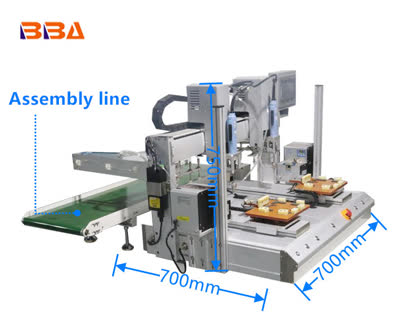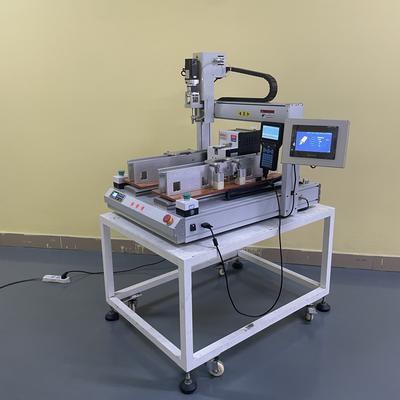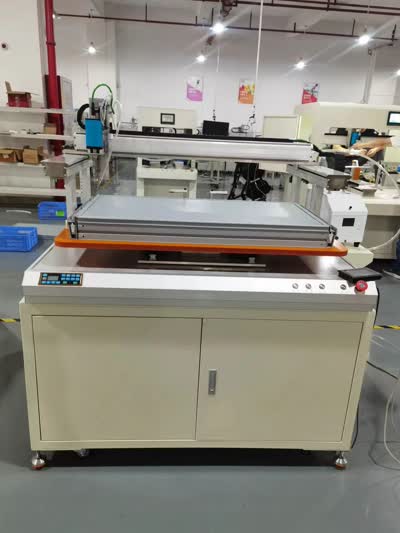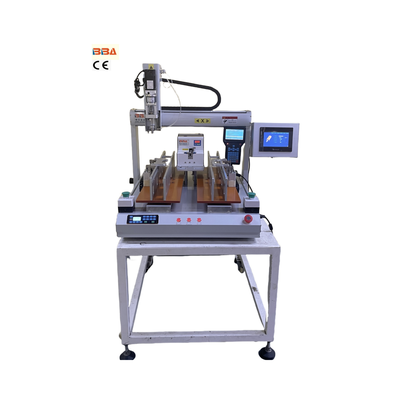PLC-Integrated Screw Locking Machines | Industrial Automation Guide
In the ever-evolving world of industrial automation, the integration of screw locking machines with PLC (Programmable Logic Controller) systems has become a game-changer for manufacturers seeking precision, efficiency, and scalability. PLC-controlled screw locking machines streamline assembly processes, reduce human error, and enhance productivity. This article explores the key steps and considerations for seamlessly integrating screw locking machines with PLC systems.
Understanding the Basics
A screw locking machine automates the fastening process by driving screws into workpieces with consistent torque and speed. When paired with a PLC, the machine can be programmed to execute complex sequences, adapt to different screw types, and communicate with other machinery on the production line. The PLC acts as the brain, coordinating tasks such as screw feeding, tightening, and quality control.
Key Steps for Integration
1. Selecting Compatible Hardware
Ensure the screw locking machine and PLC system are compatible in terms of communication protocols (e.g., Modbus, Ethernet/IP, or PROFIBUS). The PLC should support the required I/O (Input/Output) modules to interface with the machine’s sensors, actuators, and feedback systems.
2. Configuring Communication Protocols
Establish a reliable communication link between the screw locking machine and the PLC. This involves setting up the appropriate protocol, defining data exchange parameters, and testing the connection to ensure seamless interaction.
3. Programming the PLC
Develop a PLC program that controls the screw locking sequence, monitors torque and angle, and handles error conditions. The program should include logic for starting/stopping the machine, adjusting parameters, and generating alerts for faults or deviations.
4. Implementing Safety Features
Safety is paramount in industrial automation. Integrate emergency stop functions, over-torque protection, and fail-safe mechanisms into the PLC program to prevent accidents and equipment damage.
5. Testing and Calibration
Before full deployment, thoroughly test the integrated system under various conditions. Calibrate the screw locking machine to ensure consistent performance and verify that the PLC responds correctly to inputs and outputs.
Benefits of PLC-Integrated Screw Locking Machines
- Enhanced Precision: PLCs ensure consistent torque and angle control, reducing the risk of under- or over-tightening.
- Increased Efficiency: Automated screw locking minimizes manual intervention and speeds up production cycles.
- Scalability: The system can be easily reprogrammed to accommodate new products or process changes.
- Data Logging: PLCs can record process data for quality assurance and traceability.
- Reduced Downtime: Real-time monitoring and error detection enable proactive maintenance.
Conclusion
Integrating screw locking machines with PLC systems is a strategic move for manufacturers aiming to elevate their automation capabilities. By following the outlined steps—selecting compatible hardware, configuring communication, programming the PLC, and implementing safety measures—businesses can achieve seamless operation, improved quality, and higher productivity. As technology advances, the synergy between screw locking machines and PLCs will continue to redefine industrial assembly processes.

| Product Name | Applicable industries |
| Dual Head Screwdriver | Consumer Electronics Assembly |


